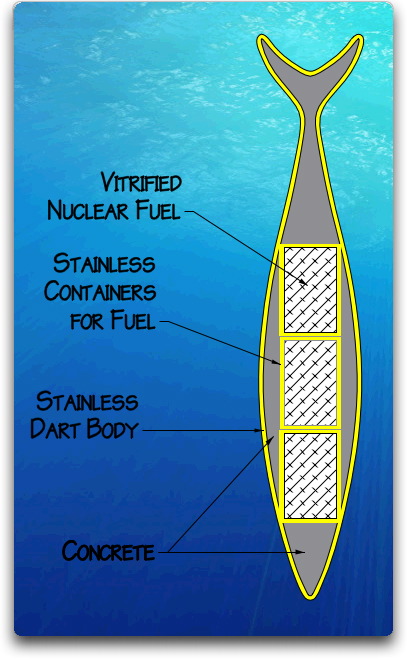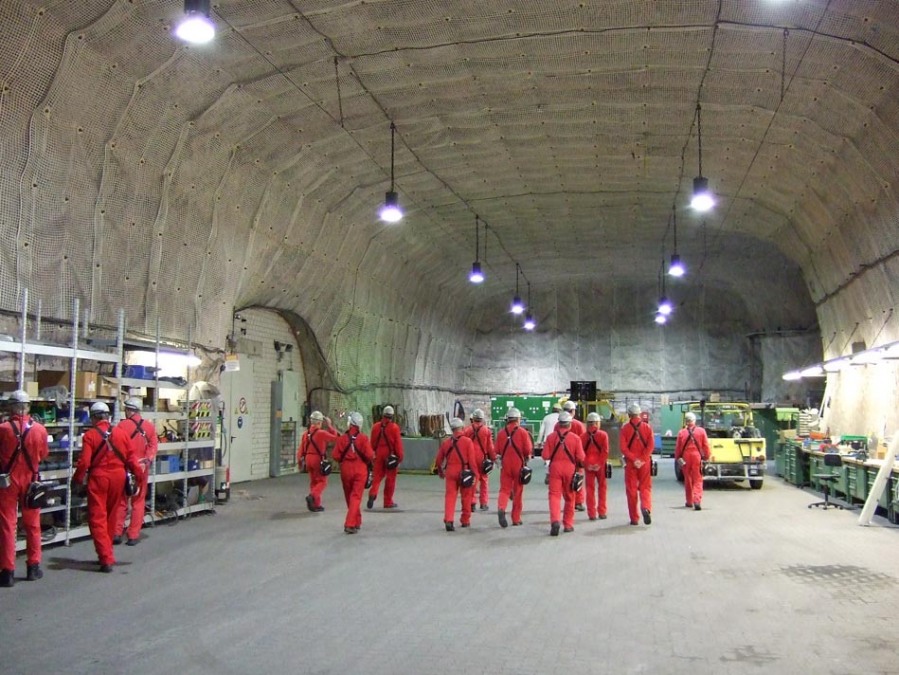As we discussed in a previous post, one of the standard solutions for getting rid of things that we do not want is to bury them. While nuclear waste depositories for the most part utilize existing exhausted mines, an alternative is to drill extremely deep holes into the earth to dispose of nuclear waste.
First, a hole is drilled more than 3 miles crystalline basement rock like granite deep in the crust of the Earth using modified technology from the oil and gas industry. Some designs call for lining the storage segment of the hole with cement or a type of aluminum phyllosilicate clay called bentonite to help prevent leakage of waste out of the borehole into the surrounding rock. Next high-level nuclear waste such as spent nuclear fuel and transuranics, is sealed into strong steel cylinders. The cylinders are lowered into the borehole to fill up about a mile of the hole. Once the storage segment is filled, then the hole is sealed. Some of the materials that might be used to seal the hole include clay, cement, crushed rock or asphalt.
In some disposal scenarios, young and very hot nuclear waste is lowered into the hole and radiates enough heat into the surrounding rock to melt it. As the waste ages and cools, the rock solidifies and forms a hard shell around the waste, isolating it.
Any amount of waste could be disposed of with the borehole solution. Unlike a underground repository which has a maximum capacity and a huge investment, drilling additional boreholes would increase capacity and each borehole would cost far less than a repository. Another advantage of the borehole approach is the fact that the boreholes can be drilled in many places where geology favorable layers of crystalline basement rock are located. This makes them especially attractive for countries which do not have a lot of nuclear waste and do not want to invest the enormous cost for a repository that would not be filled. Because the boreholes could be placed near nuclear installation that were generating the waste, all of the problems and dangers of transportation of nuclear waste could be avoided.
The amount of land needed for borehole disposal is quite small and the environmental impact would be minimal. The well head, waste handling installation and a security zone could all be contained in one square mile. After the repository is filled and the borehole sealed, the land could be returned something close to its original condition.
In 1957, the United States Academy of Sciences first considered the possibility of deep borehole disposal. Since then, much more attention has been focused on repositories but the attractiveness for the deep borehole alternative has steadily increases. Periodically, studies are made about the possibility of deep borehole disposal. Current estimates suggest that about one thousand deep boreholes would be required to contain all current high-level nuclear waste and projected waste to be generated in the United States. The cost would be roughly the same as the projected cost of a repository such as the one at Yucca Mountain. The deep borehole would be preferable because their drilling could be spread out in time and geography, reducing concentrated costs and transportation problems. Deep borehole disposal is a very viable alternative to all other suggested methods of high-level nuclear waste disposal.




